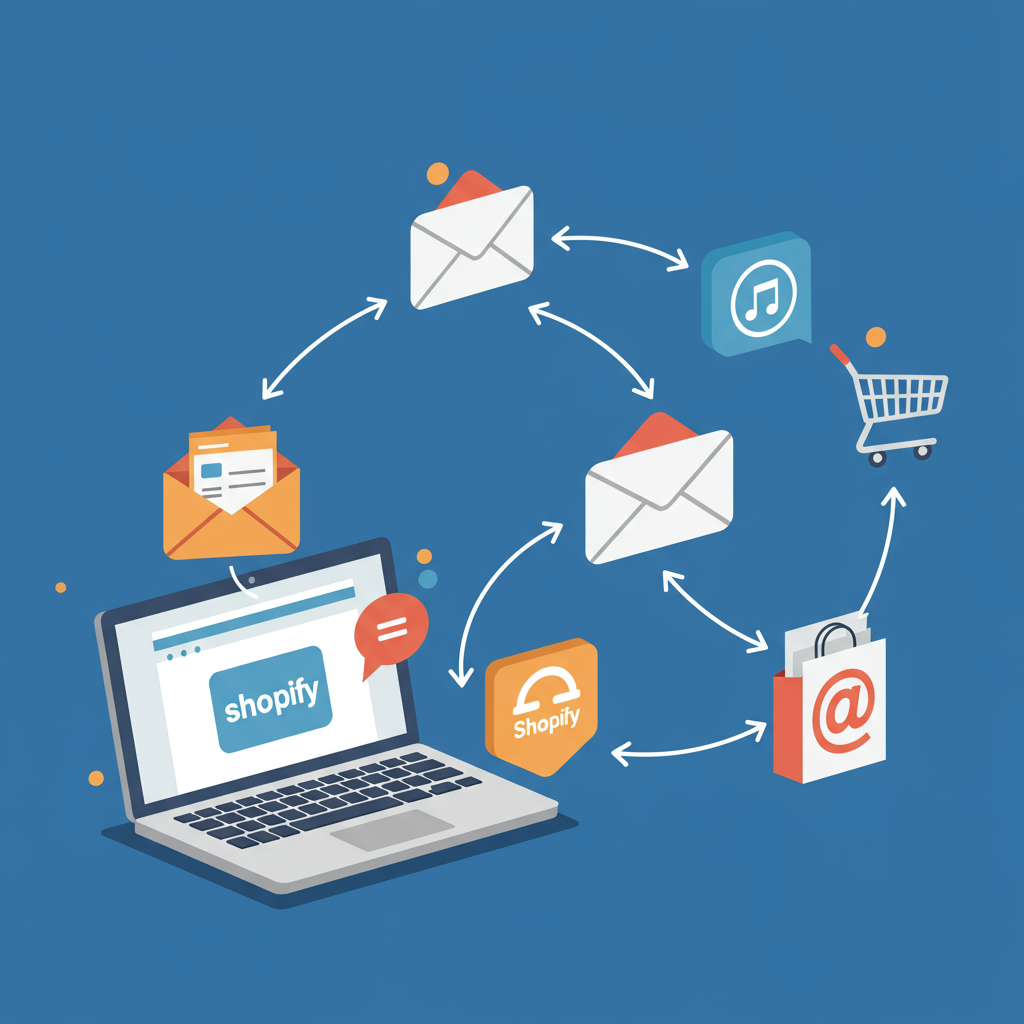Unlock the power of automated email workflows to boost sales, build loyalty, and save time for your Shopify store.
As a Shopify merchant, you’re constantly looking for ways to grow your business, increase sales, and build lasting relationships with your customers. While many strategies exist, one of the most powerful and often underutilized is email marketing automation.
Today, I want to dive deep into how you can leverage email automation workflows to transform your Shopify store’s marketing efforts, saving you time and significantly boosting your revenue.
Think about it: manually sending emails to every customer at every stage of their journey is simply impossible as your business scales. This is where automation steps in, allowing you to deliver timely, relevant, and personalized messages without lifting a finger after the initial setup.
The beauty of email automation lies in its ability to nurture leads, recover lost sales, encourage repeat purchases, and build brand loyalty, all while you focus on other aspects of your business. It’s like having a tireless sales assistant working 24/7.
So, what exactly are these “workflows” I’m talking about? Essentially, they are a series of automated emails triggered by specific customer actions or behaviors on your Shopify store. Let’s explore some of the most effective ones.
**The Welcome Series:** This is arguably the most crucial automation to set up. When someone subscribes to your newsletter or makes their first purchase, a welcome series introduces them to your brand, shares your story, highlights popular products, and perhaps offers a first-time discount.
A typical welcome series might include 3-5 emails spread over a few days. The first email thanks them for subscribing, the second might share your brand’s unique selling proposition, and subsequent emails could showcase product categories or customer testimonials.
**Abandoned Cart Recovery:** This is a goldmine for recovering lost sales. A customer adds items to their cart but leaves without completing the purchase. An automated email (or series) reminds them of their abandoned items, perhaps addressing common objections or offering a small incentive.
Studies show that abandoned cart emails have incredibly high open and conversion rates. A common strategy is a three-part series: a reminder after an hour, a follow-up with a gentle nudge after 24 hours, and a final offer or urgency message after 48-72 hours.
**Post-Purchase Follow-up:** The sale isn’t the end of the customer journey; it’s just the beginning. A post-purchase series builds loyalty and encourages repeat business.
The first email should be a simple “thank you” and order confirmation. Subsequent emails can ask for product reviews, offer related products (cross-sell/upsell), provide care instructions, or even invite them to join your social media community.
**Win-Back Campaigns:** Customers sometimes go dormant. A win-back campaign targets those who haven’t purchased in a while. The goal is to re-engage them and bring them back to your store.
These emails often include a special offer, highlight new arrivals, or remind them of the value your brand provides. Personalization, like referencing their past purchases, can make these particularly effective.
**Browse Abandonment:** Similar to abandoned carts, but even earlier in the funnel. If a customer views specific products multiple times but doesn’t add them to their cart, you can send an email reminding them of those items.
This workflow requires more sophisticated tracking but can be incredibly effective for high-intent browsers. It’s a gentle nudge to convert interest into action.
**Birthday/Anniversary Campaigns:** A delightful way to make customers feel special and drive sales. On their birthday or the anniversary of their first purchase, send a personalized email with a special discount or gift.
This not only generates sales but also significantly enhances customer loyalty and positive brand perception. It shows you care beyond just the transaction.
**Segment-Specific Promotions:** While not strictly a “workflow” in the same sense as the others, segmenting your audience and sending targeted promotions based on their past behavior or demographics is a powerful automation strategy.
For example, you could automate emails to customers who’ve purchased a specific product category, offering them complementary items or new releases within that category.
Now, how do you set all this up? The first step is choosing an Email Service Provider (ESP) that integrates seamlessly with Shopify. Popular choices include Klaviyo, Mailchimp, Omnisend, and ActiveCampaign, each with its own strengths and pricing models.
Once integrated, you’ll define your triggers (e.g., “customer abandons cart”), set delays (e.g., “wait 1 hour”), and design the email content for each step of your workflow. Most ESPs offer intuitive drag-and-drop builders.
Remember to leverage personalization tokens like `{{ first_name }}` to make your emails feel more intimate and less automated. This significantly boosts engagement.
Don’t forget the importance of A/B testing. Test different subject lines, call-to-action buttons, email layouts, and even the timing of your emails to continually optimize your workflows for better performance.
Regularly review your automation analytics. Are your welcome emails converting? What’s the recovery rate for your abandoned cart series? Use this data to refine and improve your strategies.
Finally, a few best practices: always include clear calls-to-action, ensure your emails are mobile-optimized, maintain consistent branding, and always comply with email marketing regulations like GDPR and CAN-SPAM.
Email marketing automation isn’t just a nice-to-have; it’s a fundamental pillar of a successful Shopify store. By setting up these intelligent workflows, you’re not just sending emails; you’re building relationships, recovering revenue, and scaling your business efficiently.
It might seem like a lot to set up initially, but the long-term benefits in terms of time saved and revenue generated are immense. Start with one or two key workflows, like the welcome series and abandoned cart, and expand from there.
What do you think about these automation strategies? Have you implemented any of them in your Shopify store, and what results have you seen? I’d love to hear your thoughts!






